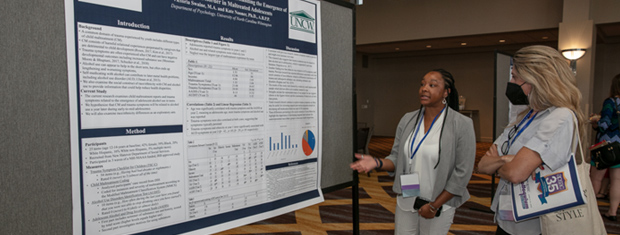




The APSAC Advisor is a peer reviewed quarterly news journal for professionals in the field of child abuse and neglect.
The APSAC Advisor provides succinct, data-based, practice-oriented articles that keep interdisciplinary professionals
informed of the latest developments in policy and practice the field of child maltreatment. It is designed to highlight
best practices in the field and publish original articles and current information about child maltreatment for professionals
from a variety of backgrounds including medicine, law, law enforcement, social work, child protective services, psychology,
public health and prevention in the U.S.
 If you wish to learn more about submitting an article to the Advisor, please click here.
If you wish to learn more about submitting an article to the Advisor, please click here.
This library contains Advisor issues dating back to the first issue in 1988. The most recent issue appears at the top.
Scroll down to select past issues by year and issue number. Once a publication appears in the box, you
can use the Enlarge button to open the document in a new window or tab (depending on how your browser is set up).
This will allow you to view the document with larger print.
To print a document, first use the Enlarge button to open the document in a new window or tab. Then use your browser's Print command.
To return here from a new tab, close the tab. To return from a new window, click your browser's Back button.
In the listing below, click on a year and issue number to see the articles in that publication.
2025 Number 1
29th Colloquium Keynote Address
What have we learned about child maltreatment fatality prevention?
The number of identified fatal child abuse cases in the U.S. has been steadily increasing, with neglect causing or contributing to most of these deaths. Focusing on articles since 2015, we searched PubMed, PsycInfo, CINAHL, Embase, Web of Science, and Scopus on the terms “child abuse,” “child neglect,” “child maltreatment,” “fatality” and “prevention” to find themes on what we have learned about risk factors, strategies, and the role of public policy for child maltreatment fatality prevention. Compared to child maltreatment in general, young child age, male gender, non-White race, special needs and disability, and behavioral issues are additional indicators more strongly associated with fatality. Most perpetrators are caregivers of their victims, and official statistics show that women are more often the perpetrators of infant abuse and neglect-related deaths. Parental mental illness, substance use, access to firearms, prior intimate partner violence, other violence in the home, and criminal history increase risk. Any parent or caretaker of any socioeconomic background may be capable of harming or killing a child; however, economic hardship often leads to parental stress, frustration, and an inability to provide basic needs. Policies addressing socioeconomic factors, poverty, housing instability, and access to healthcare can reduce the likelihood of child maltreatment and fatalities. Child death review, abusive head trauma prevention, home visiting and economic supports stand out as evidence-based strategies, while healthbased interventions and changes in the child welfare investigation and prosecution systems show promise as tertiary preventive efforts.
Fostering Success: Empowering Former Foster Youth Through Higher Education Initiatives
This article explores the challenges faced by former foster youth in their pursuit of higher education and strategies implemented through The Village Project (TVP). Launched in 2022 at the University of Illinois Urbana-Champaign, TVP addresses barriers such as food insecurity, housing instability, mental health challenges, and academic disparities by providing a multi-layered support system. Through initiatives like a peer-led support group, care package program, and partnerships with community organizations, the program fosters academic, social, and emotional success. The article emphasizes the transformative impact of tailored interventions and advocates for expanding such programs across educational institutions to enhance access, retention, and success for this vulnerable population.
Twenty Years of Research-Informed Practice through the Child Abuse Library Online (CALiO™)
The Child Abuse Library Online (CALiO™) was established in 2004 to address a gap in child abuse professionals’ access to high-quality research needed to inform the multidisciplinary, coordinated response to child maltreatment. Over the past 20 years, CALiO™ has evolved from a small in-house resource into a globally recognized hub accessed by child maltreatment professionals and researchers worldwide. By providing evidence-based research, CALiO™ has significantly enhanced professionals’ ability to deliver direct services to child victims of maltreatment and their families, including investigations, forensic interviews, medical examinations, mental health therapy, prosecution, advocacy, and more. Beyond direct-service delivery, CALiO™ also supports strengthening program development by providing the research needed to advance and sustain the work of child abuse professionals.
An Overview of APSAC’s Video Library in 2025
A central component of APSAC’s mission is to provide training and information to professionals and the public to support them in responding effectively to the problem of child maltreatment. In addition to its in-person opportunities such as the APSAC Colloquium and APSAC Forensic Interviewer Training, APSAC provides a wealth of information through the online APSAC Video Library. This article provides an overview of this resource and lists by categories the videos available as of January 2025. This is a living resource, so readers may want to check the webpage periodically to see what new offerings are available. The tables below were constructed with the help of Microsoft’s Copilot AI software.